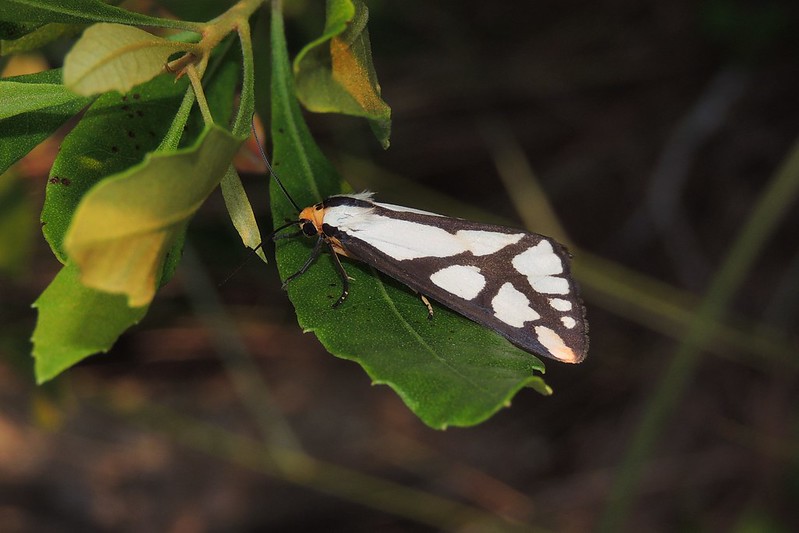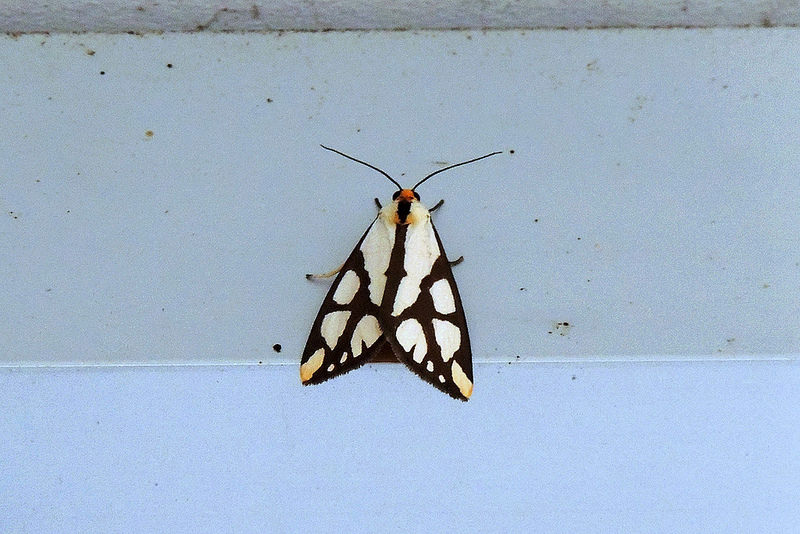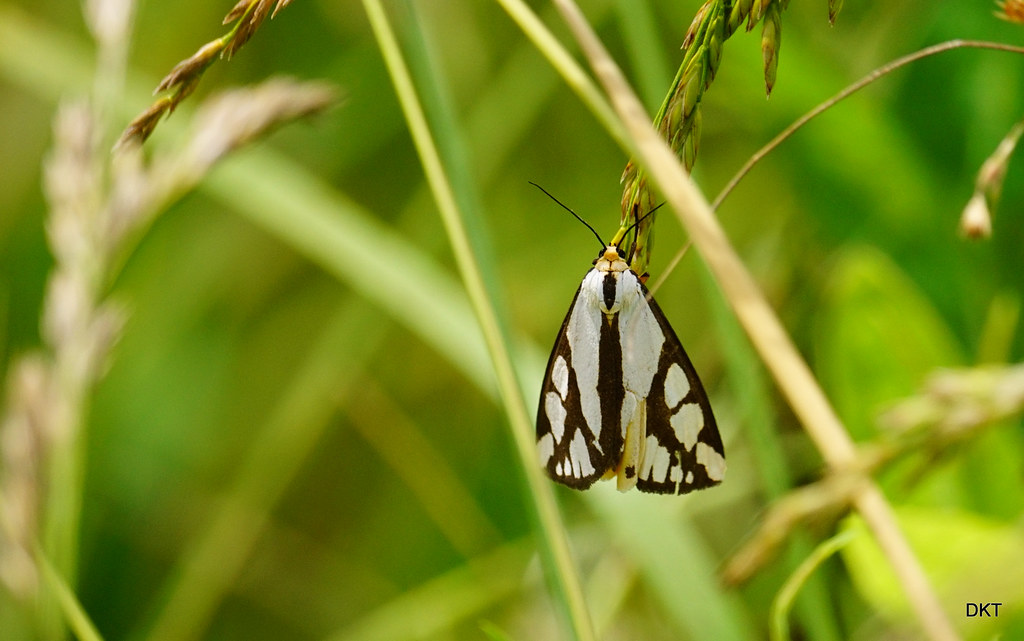Map Snapshot






14 Records
Status
Most Maryland records are from the lower Eastern Shore. There are only two records off of the Coastal Plain (Washington and Garrett Counties). We consider this moth rare in Maryland. Will come to lights, and like other members of the genus, is considered diurnal.
Description
White wings with abundant black markings, coupled with orange hindwings, and an orange abdomen, are diagnostic field marks. White-winged forms that lack dark markings are known. Because the Clymene Moth apparently lacks a white-winged form, any Haploa with all white forewings and orange hindwings is a Colona Moth.
Relationships
Like other members of the genus, Colona Moth caterpillars fed on a variety of plants including asters and other woody species.
Seasonality Snapshot
Source: Wikipedia
| Colona moth | |
|---|---|
| Scientific classification | |
| Domain: | Eukaryota |
| Kingdom: | Animalia |
| Phylum: | Arthropoda |
| Class: | Insecta |
| Order: | Lepidoptera |
| Superfamily: | Noctuoidea |
| Family: | Erebidae |
| Subfamily: | Arctiinae |
| Genus: | Haploa |
| Species: | H. colona
|
| Binomial name | |
| Haploa colona (Hübner, [1802])
| |
| Synonyms | |
| |
Haploa colona, the colona moth, is a moth of the family Erebidae. The species was first described by Jacob Hübner in 1802.[1][2] It is found from south-eastern Virginia south to Florida and west to Texas.[3]
The wingspan is 40–58 mm.
Subspecies
[edit]- Haploa colona colona
- Haploa colona fulvicosta (Clemens, 1860) (New Jersey, Kansas, Texas)
- Haploa colona conscita (Walker, 1865)
References
[edit]- ^ Savela, Markku. "Haploa colona (Hübner, [1803])". Lepidoptera and Some Other Life Forms. Retrieved August 21, 2019.
- ^ "930342.00 – 8108 – Haploa colona – Colona Moth – (Hübner, [1803])". North American Moth Photographers Group. Mississippi State University. Retrieved August 21, 2019.
- ^ Cotinis (July 3, 2006). "Species Haploa colona - Colona Moth - Hodges#8108". BugGuide. Retrieved August 21, 2019.



